Roadtrip 2017 – Exploring The West – Day 14 – July 23rd – Part 1:
After spending the night in a Flying J parking lot, I took Marley for a walk and fed him. This parking lot had signs along the edges that warned of rattle snakes. Needless to say, I kept Marley on a short leash, and kept a sharp eye on the area.
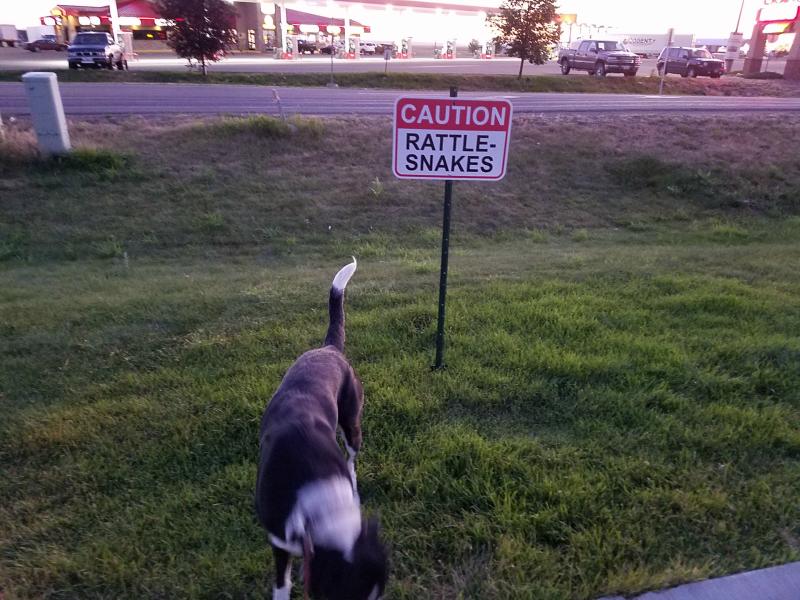
On my way inside to use the restroom, I saw that two girls had pulled in to the lot in a RV. They were checking me out as I walked by, but they were real dogs.

Seriously.
Malmstrom Air Force Base:
I took US 87 southeast out of Great Falls, and passed Malmstrom Air Force Base. Whenever I see a military base, I’m always curious to know what their mission is. Maybe it’s something really cool. I googled it and found that Malmstrom AFB is one of three US Air Force Bases that maintains and operates the Minuteman III intercontinental ballistic missile.
What! OK, I was hoping for a cool plane. Maybe bombers. I wasn’t expecting it to say nuclear missiles. It’s bizarre that a few days earlier I had driven past the place where they generated the plutonium for the first atomic bomb dropped on Japan, now I’m driving past a place that’s in charge of launching nuclear missiles.
Some time later I notice a facility in the middle of nowhere that’s fenced in with a variety of antennas. It’s clearly a government facility.
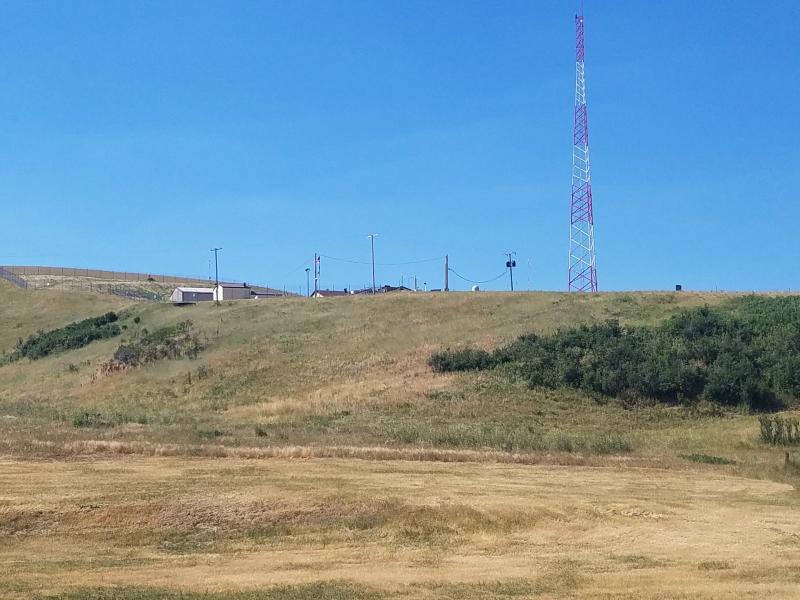
I noticed that it had a ranch style entry gate, so I decided to turn around and take a photo of it. It had a name on it, but I didn’t see what it was. I was snapping pictures as I drove by hoping one of them would turn out. I failed. I had to piece two of them together.
The sign says “The First Ace In The Hole – In Continuous Operation For Over 50 Years – Alpha 1”
Alpha 1 – that sounds military, so I Googled it.
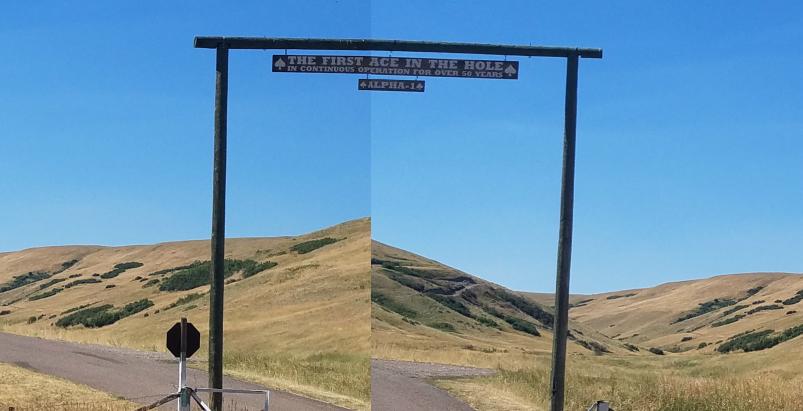
I found a photo online of an earlier version of this sign
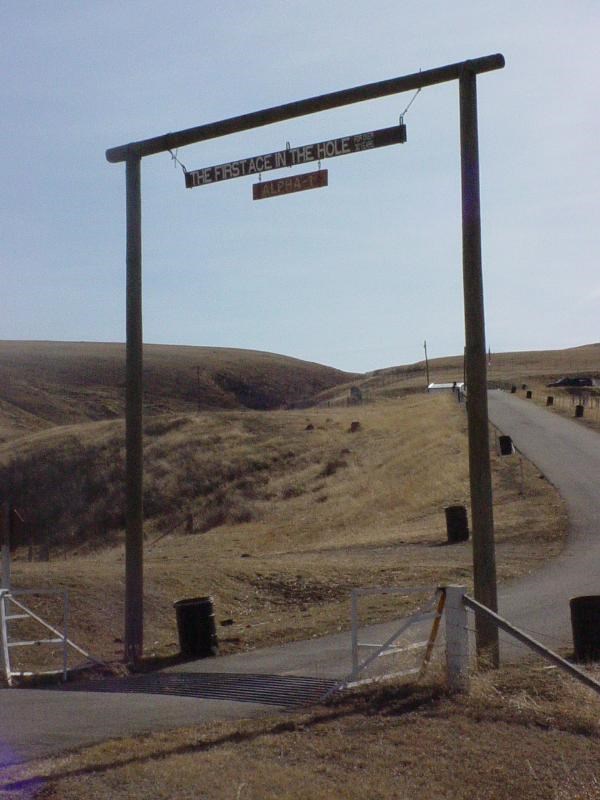
Ace In The Hole:
For 13 days in October of 1962, the United States and the Soviet Union were on the brink of a full-scale nuclear war. This was the height of the Cold War, and the Cuban Missile Crisis. The crisis lasted for two tense weeks as both sides stood their ground until the Soviet Union backed down.
Four days before the crisis ended, Malmstrom Air Force Base became one of President’s John F. Kennedy’s key players. They were the first base to put the Minuteman intercontinental ballistic missile (ICBM) on alert. John F Kennedy was reported as saying “I had confidence in the final outcome of our diplomacy. . . . Of course, Mr. Khrushchev knew we had an ace in the hole in our improved strategic forces.” President Kennedy has been credited with the term ‘ace in the hole’, but Boeing had a marketing brochure predating the missile crisis that read: “Minuteman: Montana and America’s Ace in the Hole.” Since they had them here first, they were the ‘First Ace In The Hole’.
Missile Alert Facility / Launch Control Center:
So what exactly is this place? When I got home from my trip, I did a little more research and figured it out.
The building is actually a barracks called a Missile Alert Facility (MAF), where guards stay on five-day shifts to provide round-the-clock protection for the entrance to the Launch Control Center (LCC) .
The LCC is in a self-contained capsule that sits 65 feet beneath this structure, and houses misileers, the Air Force personnel charged with launching nuclear missiles. Each capsule is hardwired to monitor 50 missiles in remote silos, and is directly responsible for 10 missiles in nearby silos.
The LCC is shaped like a pill suspended by four pneumatic shock isolators capable of protecting the occupants and machinery from nearby nuclear blasts.
There’s a pretty interesting Popular Mechanics article that goes in to more detail about this place. I’ll post a link to it at the bottom of the page.
The ranch styled entrance that I saw is not someplace you want to pull in to. Drive up to the security gate, and you’ll find yourself detained by military personnel that have authorization to use deadly force.
Nuclear Missile Silo:
Continuing further down the road, I spotted an area just off the highway that was surrounded by a security fence and razor wire. Again, there was something unusual about this place, so I turned around for another look.
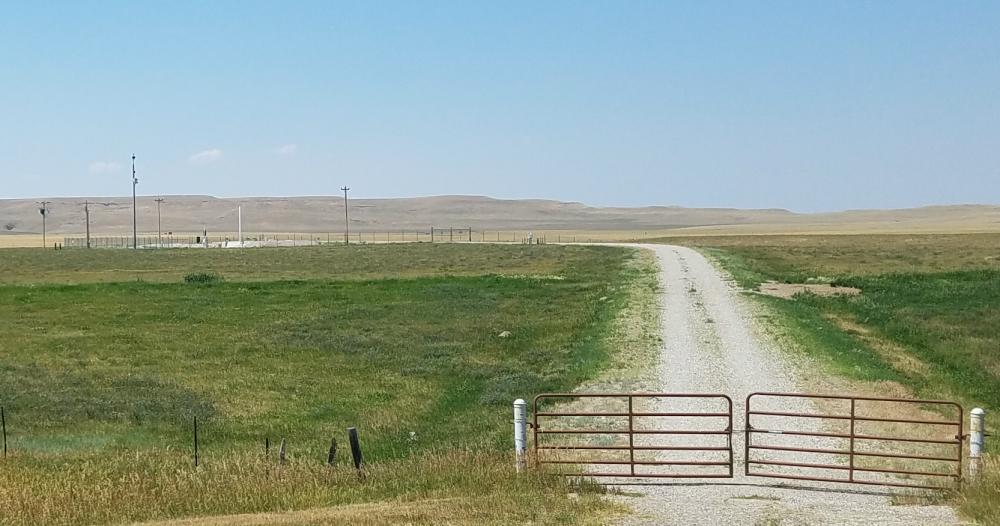
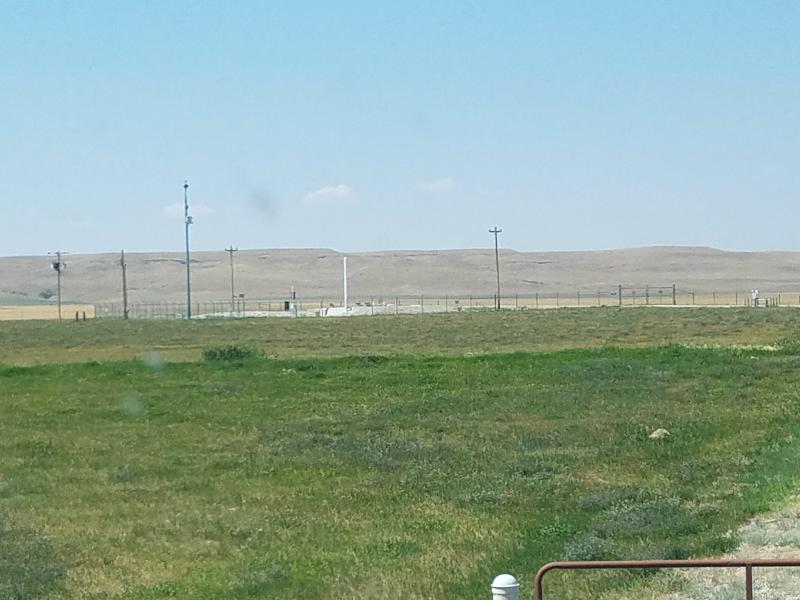
I was fairly confident that this was a nuclear missile site, but I wasn’t positive. Using Google Maps satellite image, I was able to look straight down on the area I was in.
Just as I suspected, it’s a missile silo.
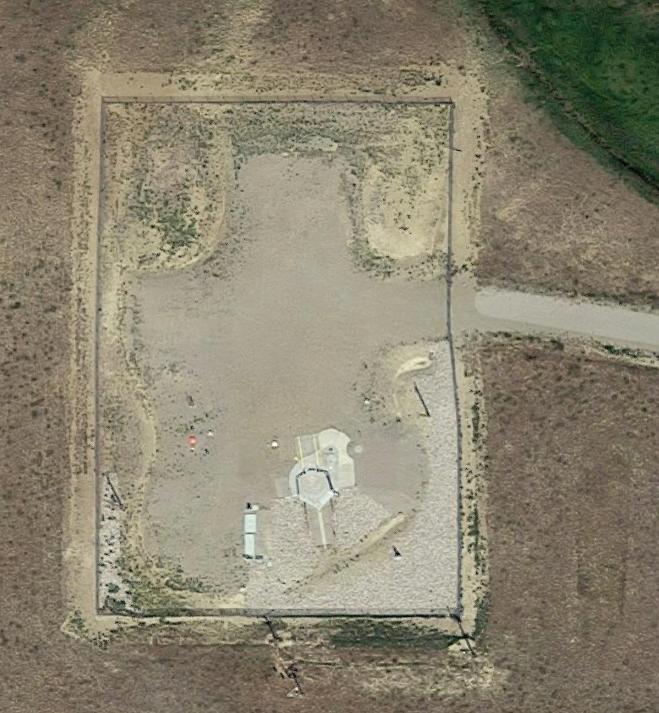
I actually spotted two of these on the route I took today.
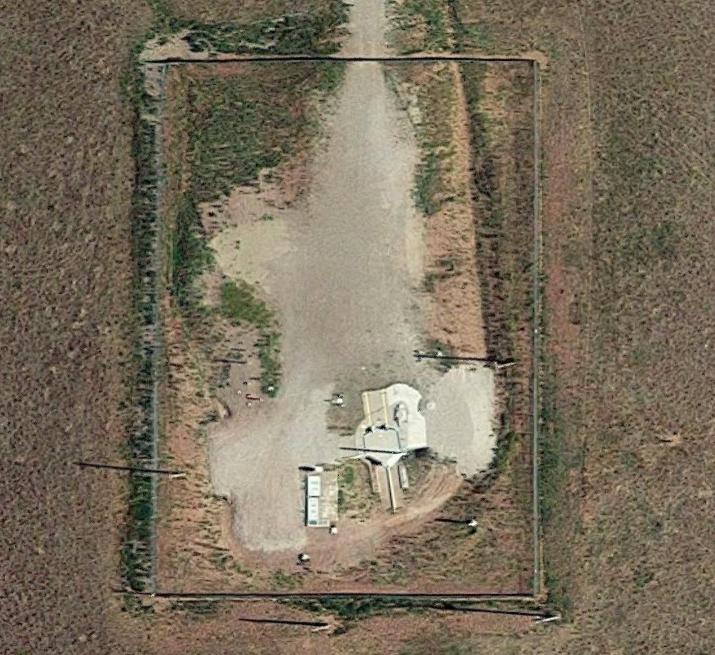
Here’s a closer look at one from a photo I found online:
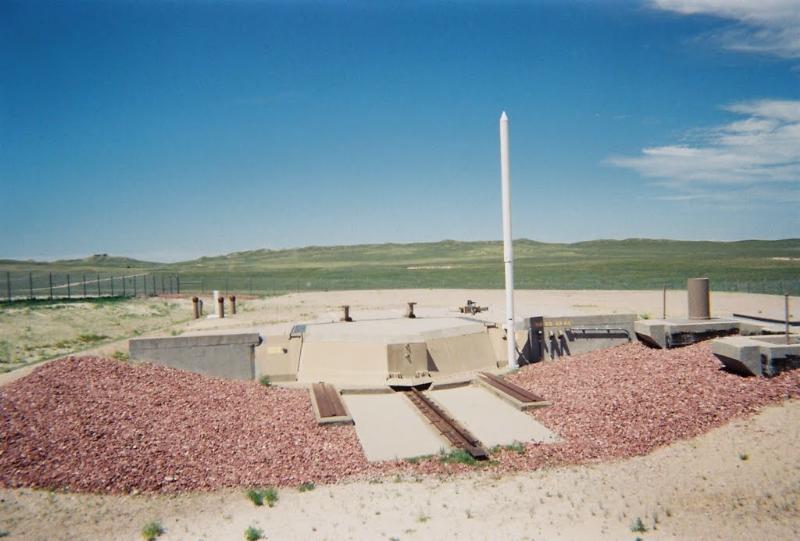
I know, it seems crazy that you can view them from Google Maps satellite images. It may also seem crazy that these silos are just sitting out here with nobody guarding them. But anyone going over the fence—be it a terrorist or a rabbit—will trigger a radar security sensor that can detect new objects on the ground. A pointed pole (see photo above) paints a picture with radar waves and alerts security teams in the Missile Alert Facility and inside the Launch Control Center if any new object appears inside the fence line. Every radar alert gets a response from a fully armed Security Response Team. There’s also a camera at the top of a pole. Rest assured that when I turned around in the driveway, there was someone watching me.
The best defense is the silo itself. The concrete slab is inset with a vaguely pentagonal block carved into the concrete, with two white rails leading from it. This is the missile’s way out of the silo. When the launch order is given, four explosive devices drive a piston that flings the 110-ton concrete-and-steel door from the top of the 90-foot silo. Everything here is redundant—one charge alone could move the door. With all four going, the hydraulic force will fling the massive door for dozens of feet.
It’s mind blowing to drive down the highway and see these facilities. Had I not looked to see what the job of Malmstrom Air Force Base was, I might not have even noticed any of this. It’s probably safe to say that people drive by these missile silos every day, and don’t even realize they’re there. Imagine driving down the highway, and seeing a nuclear missile launch out of the ground in front of you.



These Minuteman III missiles are 27 times more power than the U.S. nuclear bomb dropped on Hiroshima. They are capable of vaporizing and leveling everything within a 50-mile radius. Outside of the 50 square miles — extending into hundreds of miles — the blast, wide-spread heat, firestorms and neutron and gamma rays are intended to kill, severely wound and poison every living thing.
But, they are a necessary evil to deter other countries from attacking the United States.
After turning around in the drive to one of the silos, I couldn’t help but feel like an unmarked vehicle was going to come along at any time and check me out. It never happened. Seriously though, these facilities are designed to survive a bomb blast. The average person isn’t going to have any effect on it.
Finding The Sites Online:
After having made this initial discovery, I later found that the Launch Control Centers and silos are all listed online. Still, it was more fun discovering the sites the way I did.
Although there are numerous launch sites in operation, there are also many that have been closed. You can find the coordinates for all of the current and decommissioned launch sites on Wikipedia. You just have to look them up under the different Missile Wings.
The active sites can be seen on Google satellite view. The old Atlas and Titan I missile sites are identifiable in satellite views as well. The Titan II sites just show 2 rectangular concrete shapes angled towards each other. The Peacekeeper and old Minuteman sites have been completely excavated. You can see the land plot, but there is nothing there.
I was curious about decommissioned silos, and decided to search Texas since that’s where I’m living. I found 13 of them in Texas that use to house Atlas ICBM’s. Most can still be identified from the satellite view, and you can clearly see the silo door in the ground. 12 of them were part of the 578th Strategic Missile Squadron – Dyess AFB, Texas and 1 was part of the 577th Strategic Missile Squadron – Altus AFB, Oklahoma.
I posted some links below if you’re interested. But for me, I need to get back to my trip. After all, I’m about to embark on one of the most scenic mountain passes I have ever been on.
Next stop – The Beartooth Highway!
Links:
Roadtrip 2017 – Exploring The West – Day 14 – Part 2
Roadtrip 2017 – Exploring The West – Main Page
Popular Mechanics – Behind The Scenes at a Nuclear Alert Facility
Other Links:
341st Missile Wing – Wikipedia
351st Missile Wing – Wikipedia
Francis E. Warren Air Force Base – Wikipedia
SM-65 Atlas – This site will link you to the various missile wings that launched these ICBM’s, and the location of the old silos.
LGM-25C Titan II – This site will link you to the various missile wings that launched these ICBM’s, and the location of the old silos.
HGM-25A Titan I – This site will link you to the various missile wings that launched these ICBM’s, and the location of the old silos.
